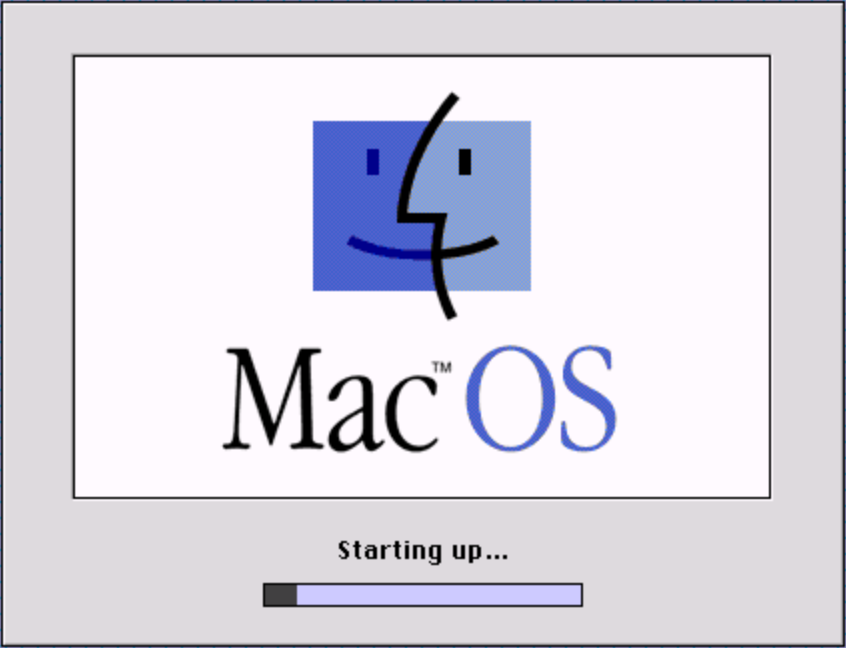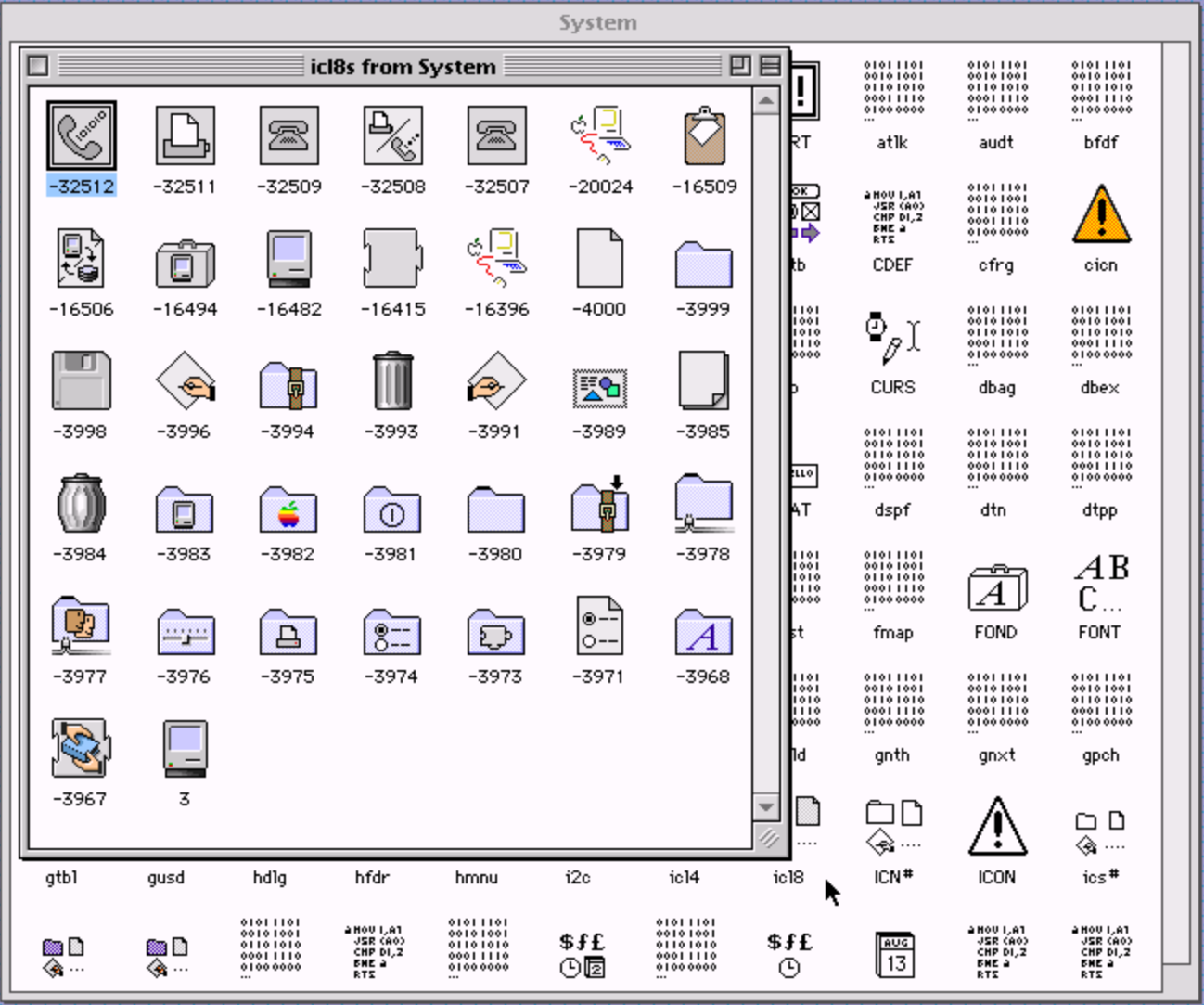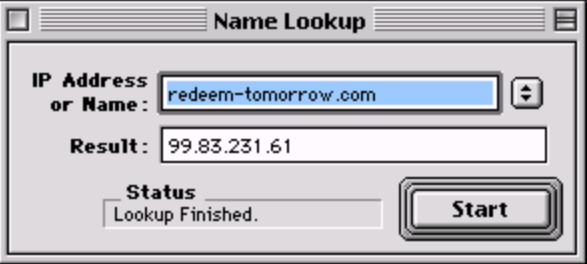Solace from the machine
I remember it clearly because sometimes that’s how trauma works.
My mom was into a fresh cycle of her serial monogamy. The third partner since I was born.
I was nine years old, and for the first time, the peace of my home was shattered by violence. Objects crashed distantly at the far end of the house. There was shouting.
My new, if ultimately temporary, step-sister had guidance to offer me: don’t pay attention to it. Don’t think about it. It’ll be over eventually.
So we made a blanket fort, the thin cotton of the textiles creating a meaningful psychological shield from events outside my bedroom. We watched Late Night with Conan O’Brien on a grainy, portable television.
And I tried not to think about it.
That summer, a neighbor brought home a Power Macintosh 5200. His mother had worked for the local school district, and had somehow finagled a summer loan of the machine. I was not fond of the boy, but I was obsessed with the Macintosh. So I was there a lot that year.
My mom was even less fond of these people, feeling in her gut that perhaps the father was the sort who was a little too interested in World War II, and not for reasons of historical scholarship.
The threat of her son being led astray by anyone with a GUI in their home finally accomplished what my own pleading alone could not. By the autumn of 1995, I was assembling a Performa 6116 bought at open box discount from OfficeMax.
A great escape

The device was nominally the family computer, as this was the mid-90’s and we were firmly at the lower edge of middle class in a good year. “Personal” computers were still a mostly shared resource.
But in practice, our Mac quickly became my domain.
By this point I could count on a fairly explosive fight between my parents around once a month. There were times where it was far more frequent.
But even in peacetime, my childhood was an isolating existence. My parents operated the dog grooming shop my mom had opened years prior, and this was six days of work every week. My mom had grown up in Catholicism, but discovered her queer identity at an early age.
As the scion of a black sheep, I’d rolled snake eyes on family support: the male end of my gamete equation was something a bit more ambitious than a deadbeat. To hear my mom tell it, he’d made illegitimate children into a hobby. He existed entirely as a modest but monthly child support payment garnished from a VA pension.
So I grew up mostly isolated, thousands of miles away from my family in Puerto Rico and New York.
It was this vacuum that I filled so eagerly with computing. I studied avidly, resenting the daily irrelevancies of school and scrounging the pocket change needed to pick up the latest copies of Macworld from the supermaket, its back issues filling my shelves. The magazine was full of reviews for business tools that didn’t matter to me. But in between I found endless breadcrumbs to new understanding and opportunity.
ResEdit
It was the humanist leanings of the Macintosh software culture that made my rise in computing possible. I’d tried to make sense of DOS and the command line, but these had always left me cold.
The Mac, meanwhile, invited my exploration. Its desktop was the simplest of cyber spaces, full of metaphor my mind could readily grasp. Most of the computer’s contents was visible and explorable.
But one day, thanks to a CD-ROM included with a copy of Macworld, I discovered an entirely new dimension waiting beneath the surface: the resource fork.

In the Old World of the Macintosh, every file was divided into two domains: a data fork and resource fork. So much of what made the Mac a Mac lurked in the resource fork. It contained iconography, fonts, even the layouts for certain UI elements.
Apple’s ResEdit, a free developer tool for exploring and editing resource forks, was like seeing The Matrix. Literally, some ways: inscrutable ASCII and hexadecimal sequences were the fallback editing mode for resource types ResEdit didn’t have a built in editor for representing.
With ResEdit, you could change the superficial appearance and behavior of certain programs, and that was neat enough. But being able to peek under the hood of anything in the machine changed my life forever. It was evidence of the underlying order, logic and structure of the universe I valued most.
What had been magic condensed into the concrete complexity of an engine compartment. Perhaps not wholly understandable at first glance, but able to be inspected, reasoned about, learned.
America Online
What began with the narrow cyberspace bubble of a local desktop and its applications burst into new scale and scope with an AOL free trial disk.
Knowing that connectivity was addictive, and that most home users were stuck near 14.4kbps, a modest 10 hour free trial was enough to hook plenty of customers into a metered access business model.
I was culturally alien, as a Puerto Rican in New Mexico, and being (at least) second-generation, undiagnosed neurodivergent wasn’t doing me many favors either. I found friendships hard to cultivate, especially as the ongoing chaos of my home life dissolved my innocence like the Alka-Seltzer tablets my mom used to nurse chronic stomach ulcers.
But with AOL, I learned to make friends on the internet. It’s a skill that has served me throughout my life.
AOL also allowed me to learn the fine art of computer maintenance. Apple sponsored an unmetered download section, where I could transfer system updates to keep our 6116 patched and healthy.
Of course, the margins of metered internet wouldn’t last. Whatever short term benefit dialup ISPs gained from the model were demolished by the costs of ongoing churn, as families were shocked into severing their connections by massive bills. My own family came and went from AOL several times this way.
With the internet gaining heat culturally, and demand swelling, the business model changed to embrace all-you-can-eat consumption.
Like so many others, I found I could eat quite a lot.
Hotline
It began, once again, with Macworld.
An article described a thriving underworld of the internet. While AOL was a serene and sterile walled garden, Hotline promised the Wild West. I wanted in.
Anyone who wanted to could use their personal Mac and internet connection to establish a file server and chat community. It was the GUI evolution of the BBS. And so thousands of servers came and went in the night.
![]()
Hotline created loose federations of these servers using trackers. Accurate up to the second you loaded them, a tracker promised an Aladdin’s Cave of digital wonders. Everything from conspiracy texts and phone phreaking guides to Christian epistles to pornography and pirated software waited on Hotline.
In the age of unmetered internet, software piracy became a compelling gambit. My family would not be spending $500 to buy me a copy of Photoshop. But if I could leave the connection open overnight, I could have whatever professional software I wanted in the space of a few days. The only limits were patience and bandwidth. It was collecting warez that gave me my first education in product design and the broad culture of user interfaces.
Some of my fondest childhood memories center around exploring the frontiers of Hotline on a Saturday night, left alone in the house with step siblings visiting their father and my parents out on the town.
In these precious pockets of evening quiet, I could lose hours discovering new tools or learning about the workings of the internet from the rogues’ gallery gathered in a server’s chat channel.

Like ResEdit before it, Hotline and the network tools I found there condensed the magic of the internet into something concrete and learnable. My first exposure to a GUI for traceroute revealed the underlying relay mechanics of my every internet connection. Keeping track of my favorite servers and their changing addresses taught me the icy, fickle nature of dynamically assigned IPs.
More than that, Hotline was an escape into a larger, less isolated world. The anticipation of new software, the joy of learning it, the aggregate tutelage from more experienced computer practitioners… it all made my life less small and more bearable.
Internet friends
If you’re a millennial, I can do a magic trick:
You just heard the squeaky door hinge sound of your crush signing onto AIM.
My generation was the first to be able to enjoy the option for complete privacy in our intensely vulnerable adolescent conversations. Whereas in the past, anything sensitive had to be conducted according to the risks of the phone, the age of instant messaging presented more options.
There was also the advantage of multi-threading: you could conduct multiple conversations at once.
I moved around a lot as a kid, and in my shyness, the phone wasn’t my first choice anyway. Thanks to AIM, I could maintain contact with people I’d been pulled away from, taking some of the sting out of a sudden change of area code.
At the turn of the millennium, the hottest internet community for Mac gamers was the matchmaking service GameRanger, built by Australian indie developer Scott Kevill. Through GameRanger, I had a durable and portable social scene. As I moved to Florida, then back to New Mexico nine months later, I lost my new school acquaintances, but kept my internet friends.
My time in Florida was the heart of darkness, and not just because it was Florida. The chaos of my home life had reached a crescendo, with a toxic, failing run at polyamory leading my mom’s unwell partner into a suicide attempt. I’d been given a thin story about using a steak knife to free a dog tangled in a leash, and its resulting hospital visit.
This left me largely alone at home for a few days.
This was an extreme case, to be sure, but it was also part of a coherent tapestry of a home that didn’t feel safe.
I know my life would have been much darker, if not for the escape, growth and connection I found online. I would have been less healthy, more alone. I would have been far more at risk of coming to harm, either from my own sense of despair—which even computing could not fully relieve—or by falling in with dubious characters.
Instead, I attended to the only education I truly cared about. I found the community and peers I needed. I was exposed at a young age to software developers, their practices and the constraints they navigated, as Mac game professionals hung out beside their customers in GameRanger’s chat.
I found just enough in the cybernetic winds to keep on going.
Technology saved me
It’s as simple as that.
Mine was not a happy, peaceful or emotionally supportive childhood. But technology placed a floor on the worst of it. When I confront, with adult eyes, the acute emptiness I carried every day between the ages of 10 and 15, I’m shocked I got through any of it.
When I say that “technology saved me,” I’m not talking about silicon, or resource forks, or domain name servers.
I’m talking about the human effort to create scalable systems that join us together and amplify our power.
I’m talking not about “technology” as inert noun, to be built and sold. I’m talking about technology as a verb. As a tradition between us. A covenant for amplifying our ingenuity and imagination.
As the power of technology has reached an unfathomable, global scale, as it does harm for short-term, short-sighted profit, as it has used us up for the benefit of a few, we have grown reasonably skeptical of technology as a business, and as a whole. We fear the people who wield technology, indifferent as they are to its human consequences.
These are rational responses to the 21st century we’ve inherited.
But I stand here today as evidence that technology can also rescue us from the abyss. It can grant us the human connection we need to keep going. It can scalably teach us new things, and offer perspective that makes us more interesting, more powerful, more effective versions of ourselves.
We have a choice.
The old cycle is dying. The incumbents have ossified. They have lost their maneuverability. All they have left is their ability to crush and spend.
But we can be more nimble than the dinosaurs. I hope we’ll build in ways that give the next generation the same opportunities that once saved me. It’s possible, but only if we make it possible.

